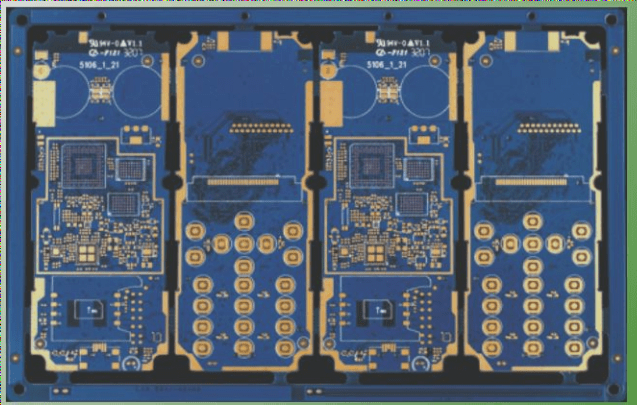1. Wave soldering refers to the process of using an electric or electromagnetic pump to spray molten soft solder (a lead-tin alloy) into a designed solder wave.
2. Printed circuit boards (PCBs) with pre-installed components pass through this solder wave, achieving a mechanical and electrical connection between the component pins or solder ends and the PCB’s solder pads.
3. The solder used in wave soldering mainly consists of tin bars, which, when melted, are used to solder the component pins onto the PCB.
4. This process effectively joins the component pins to the circuit board’s solder pads.

Wave soldering is a prevalent surface mount technology used to solder electronic components onto printed circuit boards. It is achieved by positioning components in designated spots on a pre-coated PCB with solder paste, which are then transported to the heating area via a conveyor belt. In the heating zone, the PCB encounters a solder wave that allows the solder to make contact with the component pins and form solder joints.
**The Advantages of Wave Soldering**
1. **High Degree of Automation:** Wave soldering is a highly automated process that efficiently completes soldering tasks, significantly enhancing production efficiency.
2. **Suitable for Large-Scale Production:** Its high automation and rapid soldering speed make wave soldering ideal for large-scale electronic product manufacturing.
3. **Versatile Component Compatibility:** Wave soldering accommodates various electronic components, including through-hole and surface-mount types.
4. **Reduced Soldering Costs:** The efficiency and automation of wave soldering lead to lower costs, making it economically viable for mass production.
**Application of Wave Soldering**
Wave soldering is widely used for electronic components and circuit boards. In the electronics industry, it facilitates the production of diverse electronic devices, such as integrated circuits, LED lights, and memory chips. For circuit board production, wave soldering joins electronic components to the board, enabling the board’s full functionality.
Additionally, wave soldering finds applications in automotive electronics, medical equipment, office equipment, and home appliances. In automotive electronics, it is used to produce car audio systems, navigation devices, and in-vehicle computers. For medical equipment, it supports the manufacturing of various medical devices. In office equipment and home appliances, wave soldering is used for producing computer motherboards, monitors, keyboards, mice, and appliance circuit boards.
Wave soldering technology is a popular and versatile soldering method with extensive applications, offering advantages in efficiency, reliability, and environmental sustainability, making it one of the most prevalent soldering techniques in the electronics industry.
2. Printed circuit boards (PCBs) with pre-installed components pass through this solder wave, achieving a mechanical and electrical connection between the component pins or solder ends and the PCB’s solder pads.
3. The solder used in wave soldering mainly consists of tin bars, which, when melted, are used to solder the component pins onto the PCB.
4. This process effectively joins the component pins to the circuit board’s solder pads.

Wave soldering is a prevalent surface mount technology used to solder electronic components onto printed circuit boards. It is achieved by positioning components in designated spots on a pre-coated PCB with solder paste, which are then transported to the heating area via a conveyor belt. In the heating zone, the PCB encounters a solder wave that allows the solder to make contact with the component pins and form solder joints.
**The Advantages of Wave Soldering**
1. **High Degree of Automation:** Wave soldering is a highly automated process that efficiently completes soldering tasks, significantly enhancing production efficiency.
2. **Suitable for Large-Scale Production:** Its high automation and rapid soldering speed make wave soldering ideal for large-scale electronic product manufacturing.
3. **Versatile Component Compatibility:** Wave soldering accommodates various electronic components, including through-hole and surface-mount types.
4. **Reduced Soldering Costs:** The efficiency and automation of wave soldering lead to lower costs, making it economically viable for mass production.
**Application of Wave Soldering**
Wave soldering is widely used for electronic components and circuit boards. In the electronics industry, it facilitates the production of diverse electronic devices, such as integrated circuits, LED lights, and memory chips. For circuit board production, wave soldering joins electronic components to the board, enabling the board’s full functionality.
Additionally, wave soldering finds applications in automotive electronics, medical equipment, office equipment, and home appliances. In automotive electronics, it is used to produce car audio systems, navigation devices, and in-vehicle computers. For medical equipment, it supports the manufacturing of various medical devices. In office equipment and home appliances, wave soldering is used for producing computer motherboards, monitors, keyboards, mice, and appliance circuit boards.
Wave soldering technology is a popular and versatile soldering method with extensive applications, offering advantages in efficiency, reliability, and environmental sustainability, making it one of the most prevalent soldering techniques in the electronics industry.




